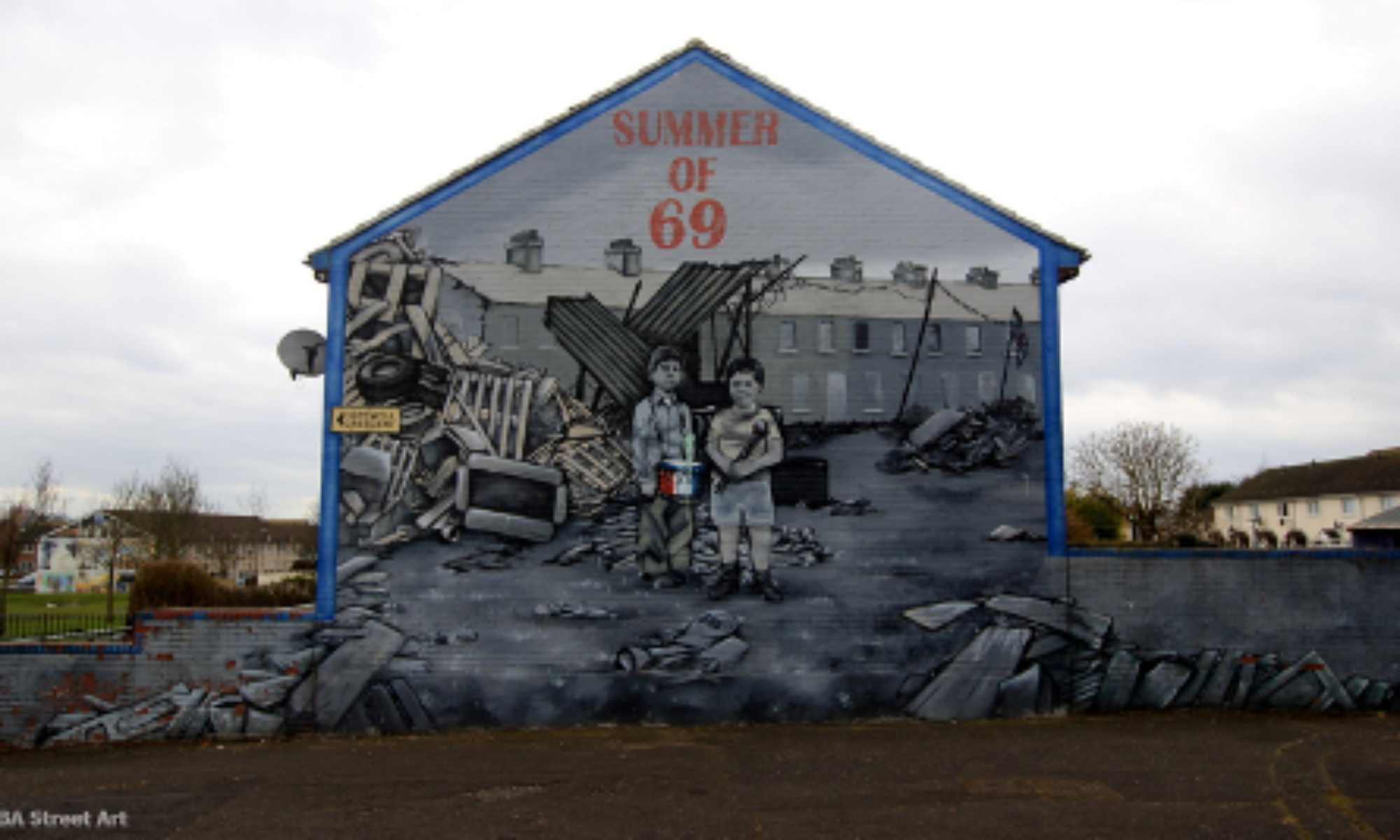Hearing this week from Eamonn McCann, I was struck by the truth of his statement that “history is painted in primary colors.” For example, the Troubles in Northern Ireland is often described as the battle between the orange (unionists) and the green (nationalists). I think this fixation on different colors and this historical framing that pits one against the other reveals the human tendency to reduce complex situations to easily digestible stereotypes of opposing forces. War and an Irish Town demonstrates that the Troubles were not simply a battle of Catholics vs Protestants, and yet most people generally understand the conflict in those simplistic terms. I think part of what makes the Troubles and 68 in general so overwhelming and difficult to comprehend is the inability to reduce the events to a set of clear definitions, and any attempts to explain the events of 68 in terms of “this” vs. “that” runs the risk of obscuring the nuanced stances and shifts that manifested throughout the era.
The “colour-coding of Northern politics” lamented by McCann is not only an issue in historical analysis today; sectarianism was also very much a reality in 68 itself. In War and an Irish Town, McCann described how the Good Friday Agreement only heightened sectarian divisions between nationalists and unionists, effectively forcing Northern Irish citizens to pick a side and preventing opportunities for a united working class of both Protestants and Catholics to come together and realize its common goals. Similarly, in the U.S. Civil Rights Movement Martin Luther King recognized that a serious obstacle to the movement was the black vs. white division that prevented white moderates from expressing solidarity with their oppressed black neighbors. These sectarian impulses even extended across the Atlantic, such as when McCann lost speaking engagements in the U.S. after showing public support for the Black Panthers. To many Irish Americans, African Americans were an enemy whose experiences were completely separate from their own, whereas McCann viewed the struggle for racial equality and the struggle for Irish civil rights as pieces of the same fundamental struggle against oppression. These constructed boundaries of black and white, orange and green, accentuate people’s differences, causing neighbors to forget their similarities as human beings seeking universal freedoms.
The “us vs. them” mentality promoted by this sectarianism is often a catalyst for violence, as seen in the films, novel, and memoir we’ve read so far. For example, the Committee in Uptight, modeled on the Black Panthers, barred whites from participating in their meetings or activities because they didn’t believe they could trust any white people to actually help their movement. The Committee also utilized violence to forcefully advocate for racial equality since the nonviolent means promoted by King had resulted in little progress and in King’s assassination. In his memoir, McCann reflects on the blind generalized hatred Catholics and Protestants felt for one another in Derry, a sentiment that facilitated people’s adoption of violence in the fight for Irish civil rights. When people lack a sense of solidarity with their neighbors, the colorful divisions between people become their entire identities, and when one’s identity is attacked, it’s hard not to violently retaliate. Reading War and an Irish Town in light of our discussions on the readings of previous weeks has helped me recognize the polarization that incites violent action and reaction, as well as the importance of solidarity to make nonviolent protest fruitful.

You have a point about how the “us vs. them” mentality and the Good Friday Agreement only deepens the divide. However, I think both McCann and us would agree that continued violence would not be a viable solution. The “us vs. them” mentality had already been there, since 1968 and earlier, so it was not simply a byproduct of the Good Friday Agreement. Yes, the Good Friday Agreement might have limited the chance of the Protestant and Catholic working class coming together, but it might be the lesser evil. If there was not the agreement, violence would largely have continued and people would die, in addition to the perpetual fear instilled in the community. As we see in Mojo Mickybo, that fear had such a heavy weight on people’s mental health that they came up with elaborate fantasies to cope with it.
An argument could still be made that if the matter is just reconciled like that, where do we find justice for the wrongfully killed? Eamonn McCann gives momentum to this argument when talking about the Bloody Sunday hearings. However, I would argue that seeking justice for all the wrongfully killed might further prevent a true reconciliation. The perpetrators would certainly do everything they could to cover it up and deny the truth so that they would not get in trouble. So, this would result in an endless cycle of back-and-forth with little achieved. What if instead they temporarily set aside past hatred and first reach an agreement first? MLK certainly did not demand descendants of slave owners to pay retribution for their ancestors. Therefore, although the Good Friday Agreement might not be the ideal solution, I think we need to put it in the context of its alternatives to truly evaluate its merit.